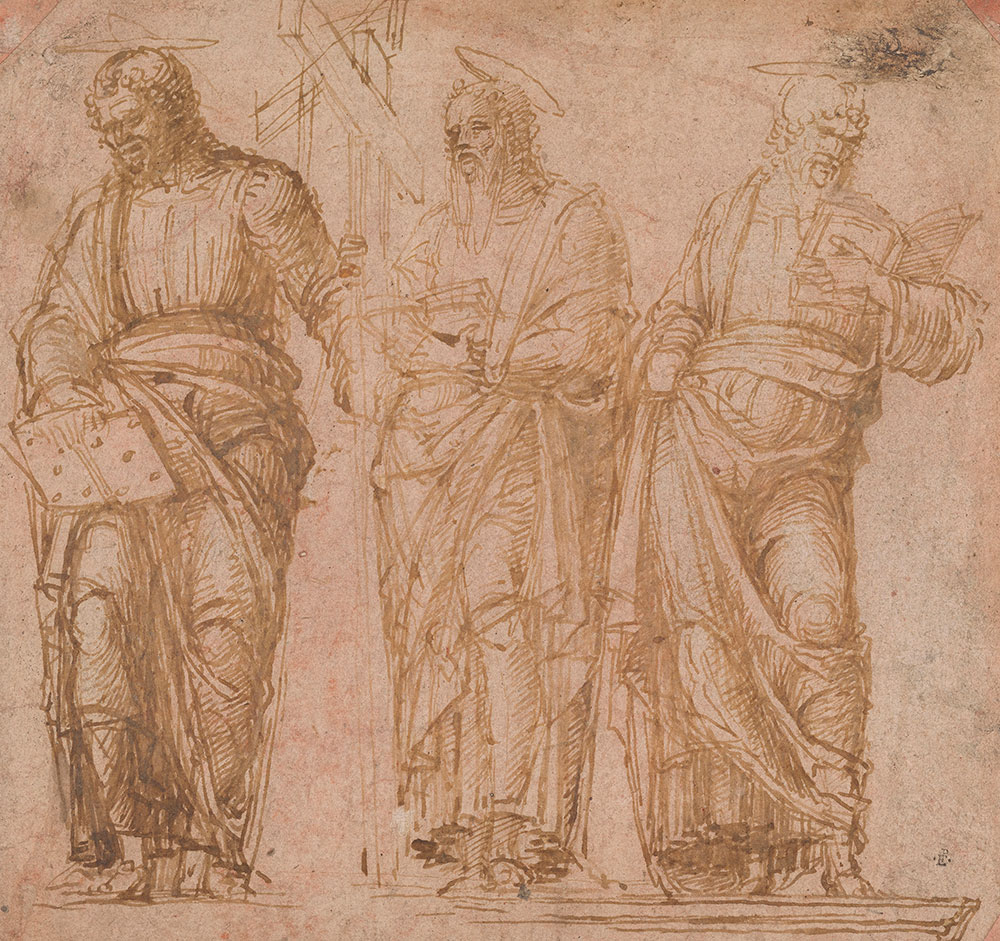 Executed in a remarkably rapid, sketchy style, this is a rare example of Mantegna’s draftsmanship. Comprising a series of studies for the same figure, the drawing shows the apostle St. Andrew or St. Philip holding a book and a cross. Depicted from a low vantage point, the figure was presumably intended to be placed high on a wall or in the upper level of a polyptych altarpiece. Mantegna turned the figure, shifted the length and break of his drapery, played with the angle of the head and the position of the book, and summarily reworked minor details.
Executed in a remarkably rapid, sketchy style, this is a rare example of Mantegna’s draftsmanship. Comprising a series of studies for the same figure, the drawing shows the apostle St. Andrew or St. Philip holding a book and a cross. Depicted from a low vantage point, the figure was presumably intended to be placed high on a wall or in the upper level of a polyptych altarpiece. Mantegna turned the figure, shifted the length and break of his drapery, played with the angle of the head and the position of the book, and summarily reworked minor details.
Andrea Mantegna
Italian; 1431–1506
Three Standing Saints, ca. 1450–55
Pen and brown ink on paper toned with red chalk
1985.100
I'm John Marciari, the Charles W. Engelhard Curator of Drawings and head of the Department of Drawings and Prints.
Mantegna's Three Studies of a Saint is one of the treasures, not only of the Thaw Collection, but of the Morgan's Italian Drawing Collection as a whole. Drawn in the 1450s, this sheet is perhaps not for a series of saints, but rather is a series of studies, sketches, for a single figure of St. Andrew or St. Philip. Either of those saints could be shown with a book and a cross, or only a book or a cross.
Mantegna has tried alternate solutions for the figure, turning him to the left or right, modifying the way the drapery falls across his legs, experimenting with the way he holds his attributes, and simultaneously adapting a range of details, all while giving the figure a monumental, sculptural sense of volume. The drawing is a marvelous example of an artist thinking with his hand, projecting his imagination directly onto the page. In the later 15th century, sketching like this would become the defining feature of Italian Renaissance draftsmanship, but this is a notably early example, and a rare survival from one of the most important artists of the period.
